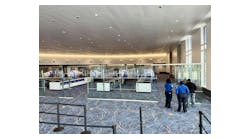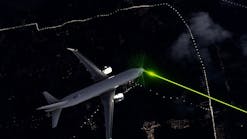Consumers have been incensed to learn how Uber, Amazon and other new economy companies change prices throughout the day with surges and short-lived discounts. Uber’s surge pricing has been known to increase over 4x at peak times, and prices on Amazon have been shown to move up to 260 percent over the course of the year. As an airline professional, I ask what took so long? And when will we see more of it?
Although some forms of variable pricing have been around forever — think about $2 beers at Happy Hour with half off appetizers, or even discounted movie matinees —, it was really airlines who embraced a system-wide idea that prices for the same product can change depending on when you buy it.
Depending on whom you ask, “revenue management” increases airline revenues by three to six percent. What’s more, by charging last-minute customers as much as five times or even more than the lowest fare, airlines have been able to make leisure air travel affordable to the majority of citizens. It’s like a subsidy from business travelers to vacationers.
So, it is no surprise that other modes of transportation, including express toll lanes, airport parking and car rental, have also implemented dynamic pricing. One untapped opportunity, however, lies inside the airport. Shops and restaurants in the airport are ripe not only for variable pricing, but for dynamic displays and offers.
I’m unfailingly groggy when I arrive in Europe after the short red-eye flight from Boston, but one thing strikes me through the fog: why is the arrival duty-free shop pitching me a deal on whiskey at 5:45 in the morning? Few airport shops change their promotions or selection over the course of the day, and none are taking advantage of the full potential that lies in traveler demographic data.
One of the great powers of airport retail is the length of its selling day. While high street brick-and-mortar retailers are forced to write off early mornings and other off-peak times, airports enjoy a steady stream of traffic nearly 18 hours per day, every day of the year. That is why airport retail generates higher sales per square foot than even the world’s best-performing malls, often almost four-times as much. But, the needs of these traveling consumers change over the course of the day.
The next revolution for airport retailers lies in data-driven merchandising. Smart airport operators will help them get there and share the gains.
At the most basic level, airport restaurants know they need to offer coffee in the morning and beer in the evening. Time of day is not a secret. The bigger opportunity is to match products and prices with the demographics of the different travelers passing through the concourse each hour of the week.
To date, the talk has centered around the holy grail of airport retailing: a personalized connection with each traveler going through the terminal. Airports, airlines and several third party apps have all fought to get themselves into travelers’ pockets with tactics like e-mail sign-up in exchange for free wifi. If I can be the traveler’s one trusted app, they all say, then I can direct her to shopping near her gate and offer a limited time coupon. It’s like Facebook advertising with geolocation and real-time advertising.
These one-to-one efforts may ultimately reach some consumers, but there will be a lot of dust in the process and more than a few losers. Instead, retailers can take advantage of consumer data in aggregate. If you know what kinds of customers pass by your shop each hour, it should be possible to tailor products, prices and offers more successfully.
ICF has been working with three levels of consumer data to tailor airport retail more effectively. With the application of artificial intelligence, we expect to refine predictions of the relationship between consumer data and specific sales efforts.
Level One: Based on airline schedules and gate usage, it’s straight-forward to see which destinations dominate the pier at each time of the day. On top of this, network models such as ICF’s NetWorks or airline data can estimate the mix of origin-destination passengers on each flight: for example, what percent of the morning passengers to Detroit are actually destined for China, where they need to arrive with gifts for their family?
Level Two: Although it may ultimately be possible to drill into demographics by census tract of each traveler, we can already predict some customer preferences based on the cities that passengers are coming from and going to. Using consumer data, we can profile how purchasing habits and willingness to pay differ between Angelinos and Delhiites, then use that information to help retailers tailor their product offer by time of day.
Level Three: Using artificial intelligence to learn how the passenger profiles align with the success of specific merchandise offers, we can help retailers optimize their selling mix to align with the flights operated each hour of the week, in each season.
As with so much of Big Data, it’s not necessary to know everything to be able to profit today. That said, the beauty of today’s machine learning environment is that every successful sales promotion today adds to our ability to predict which offers and prices will be successful tomorrow.
Already, several advertisers have recognized the power of using real-time flight data to serve relevant advertising to passengers in the airport. In an especially creative campaign at Singapore Changi airport last year, the advertiser JCDecaux invited customers, who were targeted based on the timing of eight nearby flight departures, to interact with a cognac advertisement by shaking their mobile phone. The tactic drove an unprecedented 67% of respondents to redeem a coupon in the airport and drove double-digit sales growth.
If one advertising campaign targeting just eight flight departures can lead to double-digit sales growth, then imagine the impact of real-time promotions throughout the day. The global surge of airport retail that connects directly and meaningfully to travelers is coming soon!
Samuel Engel is the global managing director of aviation at ICF.




